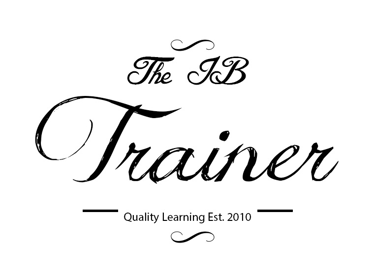Brains, Guts, and Leadership How Managers Actually Think
Discover how scientific and intuitive thinking shape leadership and management in IB Business Management, with real-world examples from top companies
IB BUSINESS MANAGEMENTIB BUSINESS MANAGEMENT MODULE 2 HUMAN RESOURCE MANAGEMENT
Lawrence Robert
10/16/20256 min read


Brains, Guts, and Leadership: How Managers Actually Think
How do managers actually make decisions? Spreadsheets or gut feelings? Step inside real workplaces where data battles instinct, and discover how the best leaders mix science, intuition, and a touch of humanity to keep their organisations moving forward.
Right, let's imagine for a second It’s 8:57 a.m. in a Pret A Manger on Fleet Street. The smell of coffee, bacon rolls, and spreadsheets fills the air.
Emma, the store manager, stands in front of her tablet, eyes flicking between two screens - one with last week’s sales data, another with this week’s forecast. In three minutes, the breakfast rush begins, and she’s trying to decide whether to bring in an extra staff member.
She’s not guessing. She’s measuring.
The graphs show a 12% increase in foot traffic on Thursdays for the past month. The app has already pulled data from loyalty cards and weather forecasts.
“Light rain later,” the screen flashes. Emma nods, taps Approve Shift Extension.
That’s scientific management in action - decision-making built on data, evidence, and logic.
No gut feeling, no hunches. Just numbers.
The Science of Decisions
Scientific thinking means managers gather quantitative data and make decisions based on evidence. It’s rational, objective, and methodical - the kind of thinking that appeals to anyone who loves certainty.
In IB Business Management terms, this is where tools like break-even analysis, investment appraisal, and decision trees live. Managers run the numbers before acting, minimising risk and maximising efficiency.
At Pret’s head office in London, analysts track real-time data from hundreds of stores.
When they noticed that vegan breakfast options spiked by 35% on Mondays, the operations team didn’t “feel” their way through the decision - they modelled costs, projected profit margins, and rolled out new stock.
Scientific management is logical. It reduces uncertainty. It lets organisations handle non-routine, high-risk decisions - like acquisitions or expansions - with confidence.
Even the NHS uses the same principles when allocating staff or predicting hospital demand. It’s all about facts before feelings.
But science has limits.
When the Numbers Don’t Tell the Whole Story
Relying too much on the past can trap managers in it.
Markets change. Technology shifts. People are irrational and do unpredictable things.
During the pandemic, Pret’s data collapsed overnight - commuters vanished, and the models couldn’t predict behaviour that had never existed before. The spreadsheets didn’t know what to do when there were no customers.
That’s when Emma had to stop looking at the screen and start trusting her instincts.
The Gut Feeling That Built a Business
Across town, in a small studio in Shoreditch, 32-year-old designer Miguel stands over a prototype of a recycled-plastic chair.
He’s about to place his first big production order.
The spreadsheets say, don’t do it. Costs are too high. Demand is uncertain.
But Miguel has spent months watching customers’ eyes light up when they see the chair at markets. He knows there’s something there. So he orders 500 units.
That’s intuitive management - the art of deciding when to ignore the numbers.
What Intuitive Thinking Really Means
Intuitive thinking is based on experience, insight, and gut feeling.
It’s not anti-logic; it’s personal logic - built from pattern recognition and lived understanding, built from experience.
In IB Business Management language: intuitive thinking happens when decisions rely on the manager’s experience rather than formal data, often for routine or urgent situations.
You use it when:
Time is short,
Information is missing, or
Data is too expensive or unreliable to collect.
Think of Richard Branson starting Virgin Atlantic. No giant data set told him the world needed another airline. He trusted the instinct that people wanted a friendlier, more human experience in the sky.
Or Anita Roddick, founder of The Body Shop, who built a global brand on ethical beauty long before sustainability was measurable. Her “gut” was doing what data couldn’t - feeling where the culture was heading.
That’s intuitive thinking: flexible, fast, and often brilliant.
But it’s risky too.
The Flip Side of the Gut
Instinct can lead you astray.
If your intuition isn’t grounded in real experience, it’s just guessing with confidence.
Countless start-ups die because a founder “just knows” it’ll work - until reality disagrees.
The IB Business Management syllabus reminds us that intuitive decisions can be irrational or biased, especially when managers mistake confidence for evidence.
That’s why good managers learn to combine science and intuition - to let data inform, but not dictate.
In modern business, this mix has a name: rational intuition.
You see it every time Netflix blends algorithms with creative judgment - analytics suggest a show, but human producers decide if it feels right.
Leadership vs Management - When People Enter the Equation
It’s 4 p.m. in a busy London hospital.
On one side of the ward, Helen, a senior nurse, reviews rotas and supply orders.
On the other, Dr Amir rallies his team before a complex surgery, energising them with quiet confidence.
Both are managing. Both are leading.
But what they’re actually doing - how they think and act - shows the fine line between management and leadership.
Management: The Architecture of Order
Management is about planning, organising, and controlling.
It ensures systems run smoothly and people know what to do.
Managers:
Follow the culture of the organisation,
Work within established policies and procedures,
Focus on the present and on operational objectives,
Make tactical decisions, and
Deal with individual needs of staff.
Helen the nurse manager is a perfect example.
Her spreadsheets track staffing ratios, patient flow, and medication stock. Every shift is a puzzle she keeps in balance.
Her job isn’t to inspire - it’s to maintain things in the correct working order.
That’s management: the logic and order that hold an organisation together.
It’s what scientific thinking looks like when applied to people.
Leadership: The Art of Movement
Leadership, on the other hand, is about inspiration, vision, and change.
Leaders:
Set the culture,
Motivate others,
Take strategic decisions,
Focus on the future,
And cope with or promote change.
Dr Amir embodies leadership. His authority doesn’t come from hierarchy but from trust.
When a new procedure is introduced, he doesn’t issue orders - he paints a picture of why it matters. His tone changes the atmosphere. People want to follow him.
Leadership deals with people, not processes. It’s emotional, not mechanical.
Where management is confirmative - learning to do - leadership is adaptive - learning to learn.
The Overlap That Keeps Organisations Alive
Of course, in reality, the two blur together.
The best managers lead; the best leaders manage.
Satya Nadella, CEO of Microsoft, is both - analytical and empathetic.
He turned a rigid corporate culture into a growth-oriented one by marrying scientific rigour (data-driven decisions about cloud strategy) with intuitive leadership (emphasising empathy and learning).
Or take Elon Musk, whose bold intuitive decisions about electric vehicles and rockets are balanced by meticulous management systems that keep SpaceX’s operations precise.
The IB Business Management syllabus wants students to see that these aren’t opposites - they’re complements.
Leadership and management are two gears in the same machine.
One keeps the system steady; the other moves it forward.
The Hybrid Manager - Data, Instinct, and Humanity
Back at Pret A Manger, Emma wipes down a counter as the lunch crowd thins.
She glances again at her tablet - sales are 14% higher than forecast. Her call this morning paid off.
But when she sees one of her new baristas struggling with the till, she steps in to help - not because the data told her to, but because she remembers how hard her first week was.
That’s the blend: science for decisions, intuition for empathy.
Today’s best managers and leaders operate exactly like that. They read dashboards and people at the same time.
They know when to trust the spreadsheet and when to trust the sigh of a tired employee.
That’s what the IB Business Management course calls adaptability - the ability to switch thinking styles based on the situation.
IB Business Management Reflection - What To Take With You
If you ever face a Paper 2 or Paper 3 question asking about “scientific versus intuitive thinking” or “differences between leadership and management,” remember this Pret story:
Scientific thinking = using data, analysis, and logic to make decisions.
Intuitive thinking = relying on experience and gut feeling when data is limited.
Management = structure, control, order.
Leadership = vision, change, people.
In real organisations, none of these exist alone.
The outstanding performance lies in finding balance - knowing when to measure and when to feel, when to manage and when to lead.
Business management isn’t just a science or an art. It’s a rhythm - a swing between data and instinct, process and passion.
The leaders who master that rhythm don’t just run organisations - they compose them.
Stay well,
IB Complete Support Courses, a new generation of affordable support materials directed at IB students seeking grades 6 or 7.
© Theibtrainer.com 2012-2025. All rights reserved.
